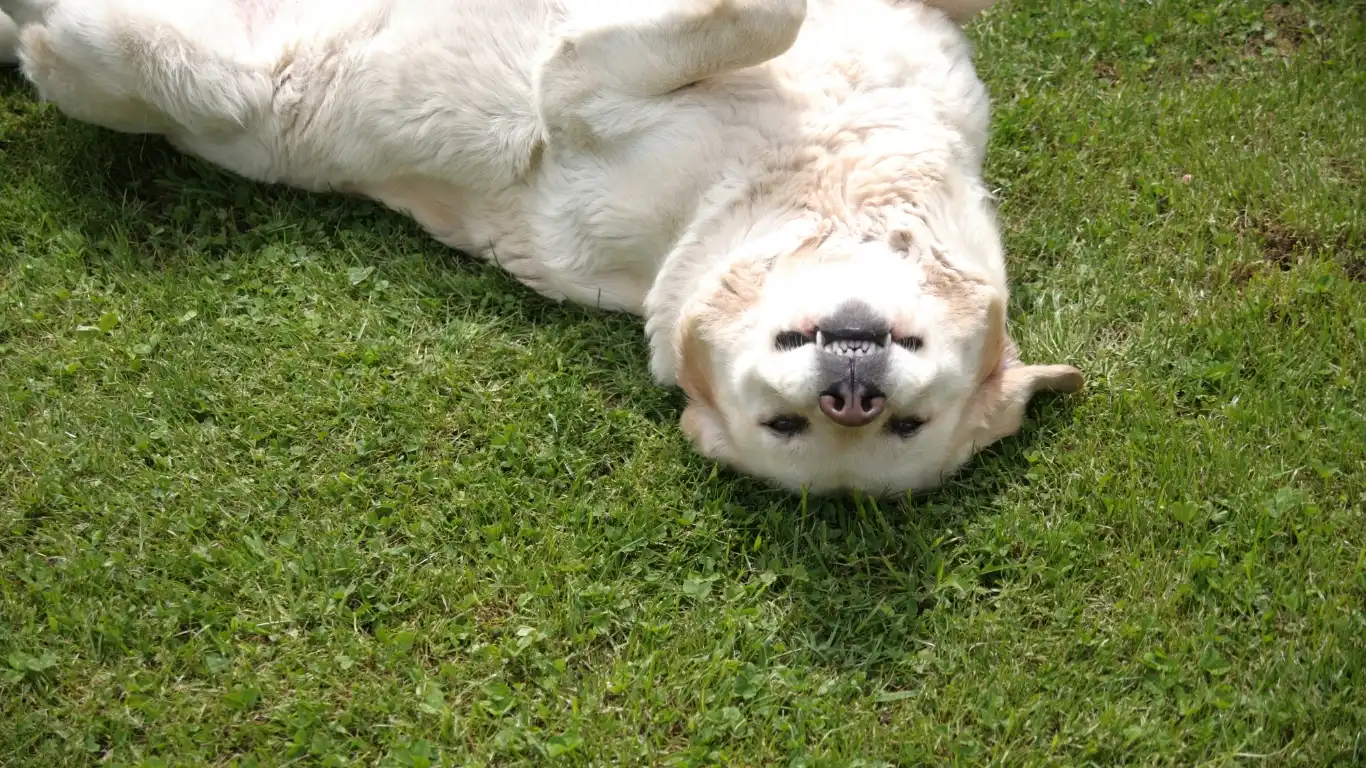Tired of Mealtime Chaos? How to Prevent a Dog from Begging at the Table
Let’s be real—one of the biggest challenges pet parents face during mealtime is figuring out how to prevent a dog from begging at the table. I’ve worked with dozens of families in my years as a Veterinary Technician and Nutrition Specialist, and this issue is way more common than most people admit. You’re not alone if your pup turns into a furry little actor the moment your fork hits the plate—cue the big eyes, drooling, maybe even a dramatic paw on your leg. Sound familiar?
Why Dogs Beg: Understanding the Behavior

First things first: begging isn’t your dog being naughty or manipulative. It’s actually a learned behavior, often unintentionally encouraged. Dogs are smart. If begging once scored them a juicy chicken nugget, guess what they’ll try again? Yep—more begging. They associate mealtimes with potential treats, especially if we’ve slipped them food from the table in the past (guilty as charged—I’ve been there too!).
As someone who’s worked closely with canine nutrition, I’ve seen how even small table scraps can add unnecessary calories and throw off a carefully balanced diet. That’s why addressing this behavior matters—not just for your sanity, but for your dog’s long-term health.
The Role of Routine and Consistency
Dogs thrive on structure. One of my clients had a Golden Retriever named Max who would practically perform a full circus routine every time his family sat down for dinner. The problem? They had no clear boundaries. Sometimes he got a fry, sometimes he got scolded. It was confusing for him—and frustrating for them.
Once we set a consistent routine and reinforced it every single day (even when guests were over), things changed. Max learned that the dining area was off-limits during meals, and dinnertime turned into a peaceful event instead of a guilt-ridden standoff.
- Set specific mealtimes for your dog away from your dining area
- Feed your dog before your own meals to curb their appetite
- Stick to the rules—no sneaky bites, no exceptions
Training Tips to Curb Begging Behavior

Let’s get into some actionable steps. If you’re wondering how to prevent a dog from begging at the table, the answer lies in a combo of training, environment control, and a little patience (okay, maybe a lot of patience depending on your pup).
1. Teach a Reliable “Place” Command
This one’s a game-changer. Teaching your dog to go to their bed or crate during meals gives them a job and a reward (treats afterward, of course). I always say, give them something to *do* instead of something to stop doing—it’s way more effective.
- Pick a spot: bed, crate, or mat in a quiet area
- Use a simple cue like “Place” or “Go to bed”
- Reward with treats when they stay put during meals
Start with short durations and build from there. Don’t expect perfection overnight—but with daily practice, most dogs pick it up surprisingly fast.
2. Ignore the Behavior (No Matter How Cute)
This part is tough, especially with those pleading puppy eyes. But attention—even negative attention—is still a reward in your dog’s eyes. I had a client with a senior Dachshund who would bark nonstop during dinner. Once they committed to completely ignoring him (no eye contact, no scolding, nothing), the barking decreased within a week. Silence is golden, my friend.
3. Use Deterrents If Needed
Some dogs need a little extra support. Baby gates, playpens, or even giving them a frozen treat toy (like a stuffed Kong) in another room can help. It’s not about punishment—it’s about setting them up for success.
How Nutrition Plays a Role

As someone who specializes in nutrition, I can’t stress this enough: a well-fed dog is less likely to beg. If your dog’s meals aren’t satisfying their nutritional needs, they’re going to be hungry—and that hunger leads them right to your dinner plate.
I once worked with a family whose Lab was constantly begging, even after meals. Turns out, he was eating a low-protein kibble that wasn’t filling him up. After switching to a higher-quality formula with better nutrient density, the begging slowed dramatically. Always review your dog’s food with a vet or nutrition pro—you might be surprised at how much it can impact behavior.
Involve the Whole Family in the Plan

One of the biggest hurdles I see in households trying to stop begging is inconsistency—especially when different people have different rules. You can train your dog perfectly, but if one family member is sneaking scraps under the table (you know who you are, Grandpa), it completely undoes the progress.
I worked with a family who had a sweet-but-persistent Beagle named Daisy. Mom was all about boundaries, but the kids? Let’s just say Daisy knew exactly when snack time hit. Once we got everyone on the same page—clear rules, zero exceptions—Daisy’s begging faded fast. It really is a team effort.
Tips for Getting Everyone on Board:
- Have a quick family meeting to agree on the no-feeding-from-the-table rule
- Make it fun for kids—have them give healthy treats to the dog in a “training zone” after meals
- Keep a feeding schedule on the fridge so everyone knows when the dog was last fed
The more unified your household is, the easier it is for your dog to understand what’s expected—and what isn’t.
Creating a Distraction Zone During Meals

Okay, so you’ve nailed down training, and your family is all in—awesome. Now, let’s talk about setting the scene for success. Dogs don’t always know what to do during mealtime unless we show them. Creating a cozy, distraction-filled spot away from the table can help redirect their focus.
I personally love recommending puzzle feeders, lick mats, or frozen treat toys for this. One of my clients had a hyperactive Aussie mix named Louie who would lose his mind every time the dinner bell rang. We started giving him a frozen peanut butter Kong right before the family sat down to eat. Game changer. He stayed content in his bed, totally zoned out on his treat, and the begging? Practically gone.
Ideas to Build Your Dog’s “Mealtime Space”:
- Pick a calm corner away from the table but still within view of the family
- Use a comfy bed or crate—make it a place your dog loves to hang out
- Add a safe chew toy, treat puzzle, or Kong stuffed with their favorite goodies
Over time, your dog will associate mealtimes with their own special routine—and leave your steak alone.
What to Avoid When Breaking the Begging Habit

Let’s talk about what not to do, because trust me, I’ve seen it all. Some tactics just don’t work—or worse, they backfire. I had one client who tried squirting water at their begging dog, thinking it would discourage him. Instead? The dog started associating dinnertime with stress and got even more worked up. Yikes.
Here’s what to skip:
- Don’t punish or yell—you’ll just create anxiety, not better behavior
- Don’t give “just a little bite”—your dog can’t tell the difference between one nibble and a free-for-all
- Don’t feed from the table “after dinner”—they’ll wait it out and beg harder next time
Dogs crave structure and consistency. They’ll thrive when they know exactly what to expect—and what behaviors are rewarded. Kind, firm boundaries go a long way.
Healthy Treat Alternatives That Don’t Encourage Begging
Let’s face it—sometimes we just want to spoil our pups a little. Totally fair. But if you’re trying to avoid encouraging begging at the table, it’s all about how and when you give those treats. As a nutrition-focused vet tech, I always tell clients to separate love from food. You can reward your dog without doing it in the middle of your meal.
Smart Treating Strategies:
- Give treats before or after mealtimes—not during
- Use low-calorie, high-protein treats to avoid weight gain
- Try healthy human foods like small pieces of carrot, cucumber, or plain green beans
One tip I use with my own dog: I pre-portion a few treats for the day in a small container. That way, I can reward good behavior without overdoing it or giving in to random snack-guilt. Win-win!
At the end of the day, breaking the begging habit is all about intention. You’re not just improving mealtimes—you’re setting your dog up for a calmer, healthier life. And from one pet professional to another pet lover, I promise: your dog is capable of so much more than you think. They just need your guidance (and maybe a few healthy snacks along the way).
Staying Consistent Over Time: The Real Secret

If there’s one thing I’ve learned in all my years as a vet tech and canine nutrition coach, it’s that consistency is everything. Teaching your dog how to prevent a dog from begging at the table isn’t a one-time fix. It’s an ongoing routine—a lifestyle shift for both you and your pup. And yes, it gets easier with time.
I always tell pet parents, think of this like brushing your teeth. You don’t skip it just because you’re tired, right? Same idea here. Reinforcing the “no begging” rule at every meal sends a crystal-clear message to your dog about what’s okay and what’s off-limits.
In fact, one of my long-time clients—a lovely senior couple with two energetic Cocker Spaniels—made consistency their mission. They printed a little reminder sign and taped it to their dining table: “No Begging Allowed. Cute isn’t currency.” It was funny, but it worked. Everyone stayed on track, and the dogs eventually stopped trying their luck. The family got their peaceful dinners back.
Simple Ways to Stay on Track:
- Use visual reminders (like a sticky note or fridge magnet)
- Reward calm behavior even if it’s away from the table
- Share progress with your vet or trainer—accountability helps!
When to Call in a Pro

Look, not all cases of begging are easy to fix. Sometimes you’re doing everything “right,” but the behavior just won’t budge. In those cases, don’t hesitate to reach out to a certified dog trainer or veterinary behaviorist. It doesn’t mean you failed—it means you’re taking the best possible care of your dog.
I’ve teamed up with trainers in the past for clients dealing with especially persistent pups, and having that extra set of eyes and customized support can make all the difference. They’ll help troubleshoot your specific situation and build a realistic game plan that fits your home and lifestyle.
Signs You May Need Professional Help:
- Your dog growls or guards food at the table
- Begging escalates to jumping, barking, or anxiety
- You’ve tried multiple strategies and nothing sticks
Behavioral support isn’t just about obedience—it’s about strengthening the bond between you and your dog. That’s always worth investing in.
Helping Your Dog Feel Fulfilled Outside Mealtimes
Here’s the thing that gets overlooked a lot: dogs don’t beg just because they’re hungry. Often, it’s boredom. If their day is low on stimulation or attention, dinnertime becomes the most exciting thing happening. That’s why enrichment is such a huge piece of the puzzle.
When I work with families struggling with begging, I always ask: “What’s your dog’s daily routine like?” If the answer is just a couple short walks and long naps, then yep—begging makes total sense. They’re looking for something to do.
Try Adding Enrichment to Their Day:
- Daily walks with new routes or environments
- Interactive toys like snuffle mats or treat balls
- Training games or trick practice before dinner
It’s incredible how behavior improves when dogs are mentally and physically satisfied. They’re calmer, more responsive, and way less interested in your dinner plate.
References
- American Veterinary Medical Association (AVMA)
- ASPCA
- Pet Obesity Prevention
- Certification Council for Professional Dog Trainers (CCPDT)
Disclaimer
This article is based on my personal experience as a Veterinary Technician with a focus on canine nutrition, and is intended for informational purposes only. It does not replace professional veterinary advice, diagnosis, or treatment. Always consult your veterinarian or a certified behaviorist for guidance tailored to your pet’s unique needs.
Helping your dog learn not to beg at the table takes patience, consistency, and a little creativity—but it’s absolutely doable. The reward? Peaceful mealtimes, a healthier pup, and that wonderful feeling of mutual respect between you and your best friend. You’ve got this!





